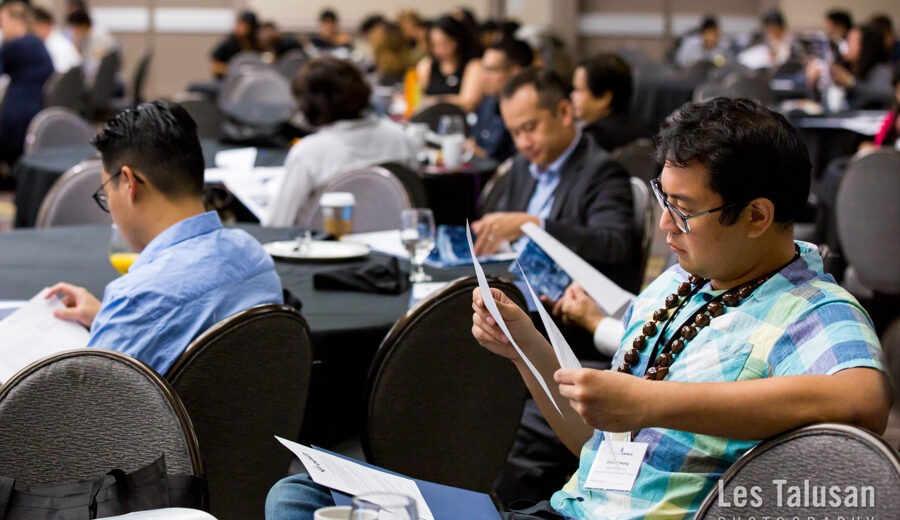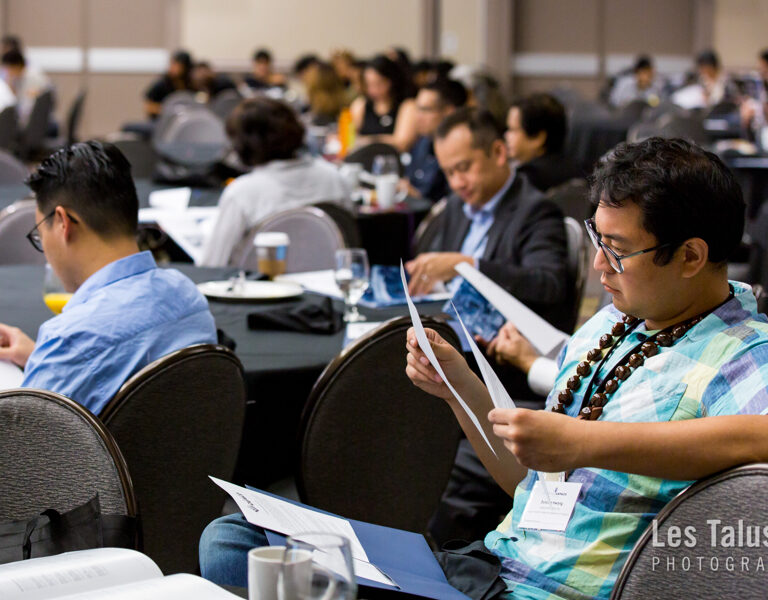Priorities for Community Resilience and Recovery: National CAPACD’s 2021-2024 Policy Platform
Download the full Policy Platform
 charter 1
charter 1
Introduction -- The Current Crises
We are in the midst of three, major overlapping crises: a housing crisis, a pandemic, and the ongoing crisis of violent racism. These crises have exposed the gaps in our society and have exploited our vulnerabilities. In doing so, they have brought into stark relief what we need to fix — what we need to do to build a better, more just country.
This document lays out our vision and values for our national policy advocacy agenda over the next few years. In the context of National CAPACD’s core issues — housing; healthy, thriving neighborhoods; economic opportunity; and serving low-income Asian Americans, Native Hawaiians, and Pacific Islanders (AAPIs), this is what we propose to address our current crises and to build a better, more just country — what we need to advance our vision of economic and social justice for all.
We are at an unprecedented time of reckoning.
We are in the midst of a housing crisis, a health crisis, an economic crisis, and a crisis of conscience with centuries of racial injustice once again coming to the fore.
In the midst of these overlapping crises, it is also a time of opportunity. This pandemic has exposed the gaps in our society, it has exploited our vulnerabilities. In doing so, it has brought into stark relief what we need to fix — what we need to do to build a better, more just country.
This document lays out our vision and values for our national policy advocacy agenda over the next few years. In the context of National CAPACD’s core issues — housing; healthy, thriving neighborhoods; economic opportunity; and serving low-income Asian Americans, Native Hawaiians, and Pacific Islanders (AAPIs), this document presents what we prioritize to build a better, more just country.
The Pandemic and Its Economic Impact
The full human and economic toll of the COVID-19 pandemic is not yet known. There are over 10 million confirmed cases, over 250,000 dead from the virus, and many millions of people who have become unemployed. At this point, we know that the costs will be deep and the impact will be long lasting. We also know that the virus has exploited our country’s social and economic vulnerabilities. It disproportionately affects people who are elderly or with pre-existing health conditions. It disproportionately impacts people who are homeless or marginally housed, people who live in overcrowded conditions, people of color, immigrants and refugees, indigenous people, low-wage workers, people with disabilities, and disproportionate numbers of women across all vulnerable categories… It has exacerbated existing societal gaps and inequities.
As of August 2020, there are over 1.2 million AAPIs in poverty living in the top 30 coronavirus hotspots. There are over 1.3 million AAPI-owned small businesses and over 1.5 million AAPI seniors in these coronavirus hotspots. A significant proportion (approximately 1/3) of all AAPIs living in coronavirus hotspots are Limited English Proficient (LEP). On top of all this, the pandemic has triggered a rise in anti-Asian violence.
During the pandemic, we must take specific targeted action to make sure that all vulnerable populations have accurate and accessible information and the resources they need to survive. For vulnerable AAPIs, this especially means that information must be available in multiple languages and that outreach for programming should happen in partnership with trusted, local community institutions. Given the rampant, fraudulent actors that often prey upon our communities, a strong focus on enforcement against predatory actors also will be critical.
After the pandemic, recovery from the human and economic impact of the coronavirus will be long and difficult — our efforts will likely need to be sustained years after the pandemic is over. Our challenge will be to re-imagine and rebuild a more just society — not simply a return to the status quo.
The Enduring Crisis of Violent Racism
Before the coronavirus pandemic, before the current instantiation of the housing crisis, our country was infected with racism. Racism is embedded in all of our institutions, ingrained in our systems, thriving within our culture. Its boundaries are enforced with violence.
The current flare up of state-sponsored, anti-black, racist violence is not a new crisis. It is centuries old. But it is still a crisis. It is still very much a crisis of our current time.
The murders of George Floyd and Breonna Taylor — in the midst of a pandemic — were horrific and traumatic, a visceral reminder for the entire country of how deeply embedded violent racism remains.
The public response to the murders of George Floyd, Breonna Taylor, and so many others, however, have opened a window of opportunity for a massive, collective movement to shift our country’s priorities (including how we use public resources) from violent, systemic enforcement of racist norms to more humane, proactive, and community-based modes of problem solving.
For AAPI communities, the challenge is to unlearn our own anti-blackness and our own internalized racism. We will still need to advocate for ourselves. AND we must do so in a way that is explicitly supportive of broader struggles for racial justice. We must do a better job of situating our needs and defining the policies we advocate in this context.
Our Policy Platform
National CAPACD uses our policy platforms to inform our federal policy advocacy work over the subsequent four years after the platform is ratified by our member organizations. Given the unique and unprecedented challenges of the current crises and their affect on the rapidly shifting federal policy environment, we have included in this iteration of the Policy Platform statements of our values with each set of recommendations for each of our major issue areas. These values — as much as the specific recommendations — will equip us to be responsive to the policy environment as we see it over the next few years.
 charter 2
charter 2
Housing
Affordable, safe, stable, and physically accessible housing is the cornerstone of each individual’s health and economic well-being. Therefore, all people must have an affordable, safe, stable, and physically accessible home in the community of their choice.
Our Values and Vision
Housing is a basic human right, not a privilege.
From our founding, advocating for all people’s right to access quality, affordable, accessible, stable housing has been one of our core issues.
Affordable, safe, stable, and physically accessible housing is the cornerstone of each individual’s health and economic well-being. Therefore, all people must have an affordable, safe, stable, and physically accessible home in the community of their choice.
Towards this vision, we believe our country must:
-Provide safe, affordable, quality, stable, accessible housing for all,
-Ensure equitable access to housing and protect people against housing discrimination,
-Protect the rights of people to stay in their housing.
Crisis Response
Prior to the onset of the pandemic, low-income AAPIs were already at particular risk of losing their housing, already increasingly squeezed by rising housing costs. The layering of the pandemic upon the housing crisis means that we need increased attention to tenants’ rights and tenant’s protections (e.g., eviction moratoria) and resources (e.g., rental support) to protect people’s increasingly tenuous housing situations. We also need increased housing counseling, rent and mortgage forgiveness programs for homeowners and renters who have lost work during the pandemic, federal stimulus funding to support families’ broadband and utilities, and direct support for nonprofit affordable housing owners to mitigate their loss of rental income and their increased expenses (e.g., increased cleaning costs, increased hazard pay for frontline workers) during the pandemic. Any and all federal housing support should have accountability measures to assure that disproportionately impacted communities of color — including AAPIs — receive an equitable share of the resources.
In addition, the economic crisis sparked by the pandemic will likely lead to new waves of foreclosures. And, unlike the foreclosures at the heart of the last recession, the coming wave will likely be much more widespread — with defaults across a variety of commercial and multi-family residential properties. Addressing this coming wave of foreclosures is a tremendous opportunity to increase community-based ownership of facilities and commercial properties and to preserve “naturally occurring affordable housing” via community or nonprofit ownership.
Beyond the Pandemic
Post-pandemic, we can not simply return to business as usual.
-We will need tens of billions of additional annual federal investment over the next several years to develop new affordable housing and to preserve existing affordable housing.
-We will need new federal leadership to protect tenants’ rights and to make local housing and development policies more equitable.
-We will need a new commitment to make housing and homeownership more accessible to more Americans.
 charter 3
charter 3
Healthy, Thriving Communities
As part of achieving true social and economic justice, all communities and neighborhoods must have the resources and opportunities that they need to engage and thrive.
Our Values and Vision
We believe that, in order to achieve true social and economic justice, all communities and neighborhoods must have the resources and opportunities they need to engage and thrive. The following shared values of healthy and thriving communities are necessary to achieve this vision:
Access: We believe that everyone should have equitable access to affordable housing, public spaces, institutions, and resources, regardless of language spoken, ability, gender identity, race, or religion. Neighborhoods should include equitable transit investments, jobs, and adequate financial institutions.
Community: We believe in the preservation of culturally significant neighborhoods from displacement or gentrification. We believe that there should be robust equitable investment in physical and social infrastructure to serve all communities.
Health: We believe that health includes not only affordable healthcare and community support for all, but also safe homes, parks, open or green spaces, and clean air and water.
Opportunity: We believe that everyone should have equal opportunities, which includes access to fair financial products and financial institutions, as well as equitable investments in our neighborhoods.
Expression: We believe that arts and culture are critical components of healthy neighborhoods. We stand with community leaders and public policies that protect gender, religious, or cultural expression.
Safety: We believe that everybody should live in a safe neighborhood. We believe that public safety also includes reduced immigration restrictions, an end to racial and religious profiling, as well as an end to police violence and hate crimes that target people of color, immigrants, Muslims, and LGBTQ communities.
Autonomy: We believe in local autonomy over the planning process and that community members should have control over shaping their neighborhoods. We believe in self-determination for Native Hawaiians, Pacific Islanders, Native Americans, and all indigenous people through independent control of local land and resources.
We seek to enact this vision of social and economic justice through working with community-based member organizations to ensure that low-income AAPIs have the information, resources, and power necessary to shape their neighborhoods and communities in ways that are consistent with our values and vision.
Crisis Response
In the wake of the recent spate of police killings of black people, protesters have called into question the role and function of the police.
As funding for service programs for low-income people have decreased, police budgets have increased.
In most places across this country, the police are the frontline response to issues of homelessness, mental illness, domestic abuse, etc. In many cases, the police are the only response. There is no reason why an armed, militaristic response is needed in any of these instances. Instead of promoting community safety in low-income neighborhoods and in communities of color, police have been responsible for escalating tension and violence.
Resources that are allocated towards policing would be more effectively and equitably applied towards community-based solutions — increased social services, education, community programs, recreation, arts and culture, etc. — the types of investments that make for healthy, thriving communities.
In order for communities to become safer (and therefore to be healthier and to better thrive), we support calls to reduce funding of enforcement and policing and redirect resources towards solutions that communities identify and enact. Federal policies can support and incentivize these transitions.
Beyond the Pandemic
Economic recovery will require rebuilding and expanding our nation’s infrastructure — including transit, roads, bridges, water systems, the energy grid. Post-pandemic, economic rebuilding should make our infrastructure more green and sustainable, as well as more equitable. In order to maximize community benefits for low-income and vulnerable communities, we recommend the following:
Any comprehensive infrastructure package should include long term capital investments (e.g., community facilities like clinics, senior centers, childcare centers, cultural and community space, parks and recreation, etc.) in low-income communities that are planned and directed by community members.
Investments in communities should include resources for inclusive and accessible (including language access) community empowerment, community planning, and community-based place-making strategies. Low-income people should have the power and support necessary to define their own vision for their communities.
New infrastructure should not promote displacement of existing communities. Instead, a comprehensive infrastructure package should include a variety of associated policies that prevent displacement in our communities.
Likewise, programs, regulations, and incentives intended to promote development (such as Opportunity Zones) or that bring new infrastructure to our neighborhoods should be planned and implemented with baseline, enforceable thresholds for community benefits.
 charter 4
charter 4
Economic Opportunity
To address existing economic and racial inequality, Federal policy should support low-income people and communities of color to have tangible and accessible opportunities to build wealth.
Our Values and Vision
Wealth and income inequality have reached unacceptable levels in this country. People should not have to choose between feeding their family or keeping their homes. To address this dire economic inequity, Federal policy should support low-income people to have tangible and accessible opportunities to build wealth. This includes policies and programs such as job creation, job training, labor protections, access to capital for low-income people, financial capabilities coaching, equitable tax policies, childcare, access to public transit, etc. Of these broad array of policies and programs, National CAPACD focuses on financial and tax reform, programmatic support for financial capabilities and economic empowerment, and programmatic support for community-serving small businesses and micro-enterprises.
Crisis Response
In a time of extreme economic crisis where there has been massive job losses due to circumstances beyond any one person’s control, workers, students, and small businesses will need a broad and comprehensive variety of income support, supportive service and technical assistance, debt forgiveness, and protection from predatory lending and abusive debt collection practices. In the design and implementation of these programs, we strongly recommend that priority be given to lower-income people (whether workers, seniors, students, unemployed, etc.) and to micro-businesses (firms with 10 employees or less) — i.e., that priority be given to classes of people and firms that were already the most vulnerable.
Beyond the Pandemic
Moving forward, National CAPACD will advocate for policies and programs that advance economic opportunity for all through the following:
-Expand economic opportunity for low-income people through Comprehensive Financial Reform.
-Make the Tax Code more equitable.
-Support community-serving Small Businesses, especially entrepreneurs of color and micro-businesses.
-Expand and coordinate Job Creation and Job Training programs.
-Invest in Financial Capabilities and Economic Empowerment programming targeted towards low-income communities of color and Limited English Proficient communities.
 charter 5
charter 5
Serving Low-income AAPIs
AAPIs have the highest income inequality and the fastest growing population of people in poverty of any racial or ethnic group. Policy makers need to better understand the full range of AAPI experiences and Federal programs need to be more accessible to a broader range of low-income AAPIs.
Our Values and Vision
AAPIs are a diverse and underserved set of communities. Our communities include over 100 languages/dialects spoken and over 50 ethnic groups. Our communities include recent immigrants, refugees, the descendants of immigrants and refugees, and descendants of people who were here long before Europeans set foot on this hemisphere (i.e., Native Hawaiians). With varying educational backgrounds, cultural practices, and huge differences in wealth and poverty, the “AAPI experience” is not singular and is difficult to categorize. And yet, there continues to be a persistent mythology of the economic success of all AAPIs, despite the fact that AAPI communities have significant poverty populations as well as high income individuals. In fact, AAPIs have the highest income inequality of any major racial or ethnic group and have had the fastest growing population of people in poverty of any major racial or ethnic group. Policy makers need to better understand the full range of AAPI experiences and Federal programs need to be more accessible to a broader range of low-income AAPIs.
Crisis Response
Any and all programs to respond to the pandemic (from health programs to small business support to rental assistance) MUST be made available in multiple languages and outreach should be contracted through trusted community-based institutions, such as local, community-based nonprofit organizations.
Further, it is imperative that community institutions — such as community-based nonprofit organizations — survive the economic impact of the pandemic. Special attention and resources should be made to ensure that the nonprofit organizations — large and small, new and old — that have the language and cultural capacity to serve AAPIs are not lost. If these organizations are not around to serve their communities, it is likely that no one else would.
Beyond the Pandemic
Ongoing, we recommend the following for federal policies and programs to best serve low-income AAPIs:
-Enact language and culture best practices.
-Enact data best practices.
-Build the capacity of community-based organizations with linguistic and cultural compentency.
-Reform immigration policies to be more equitable and humane.
-Target tailored resources towards Native Hawaiians.


